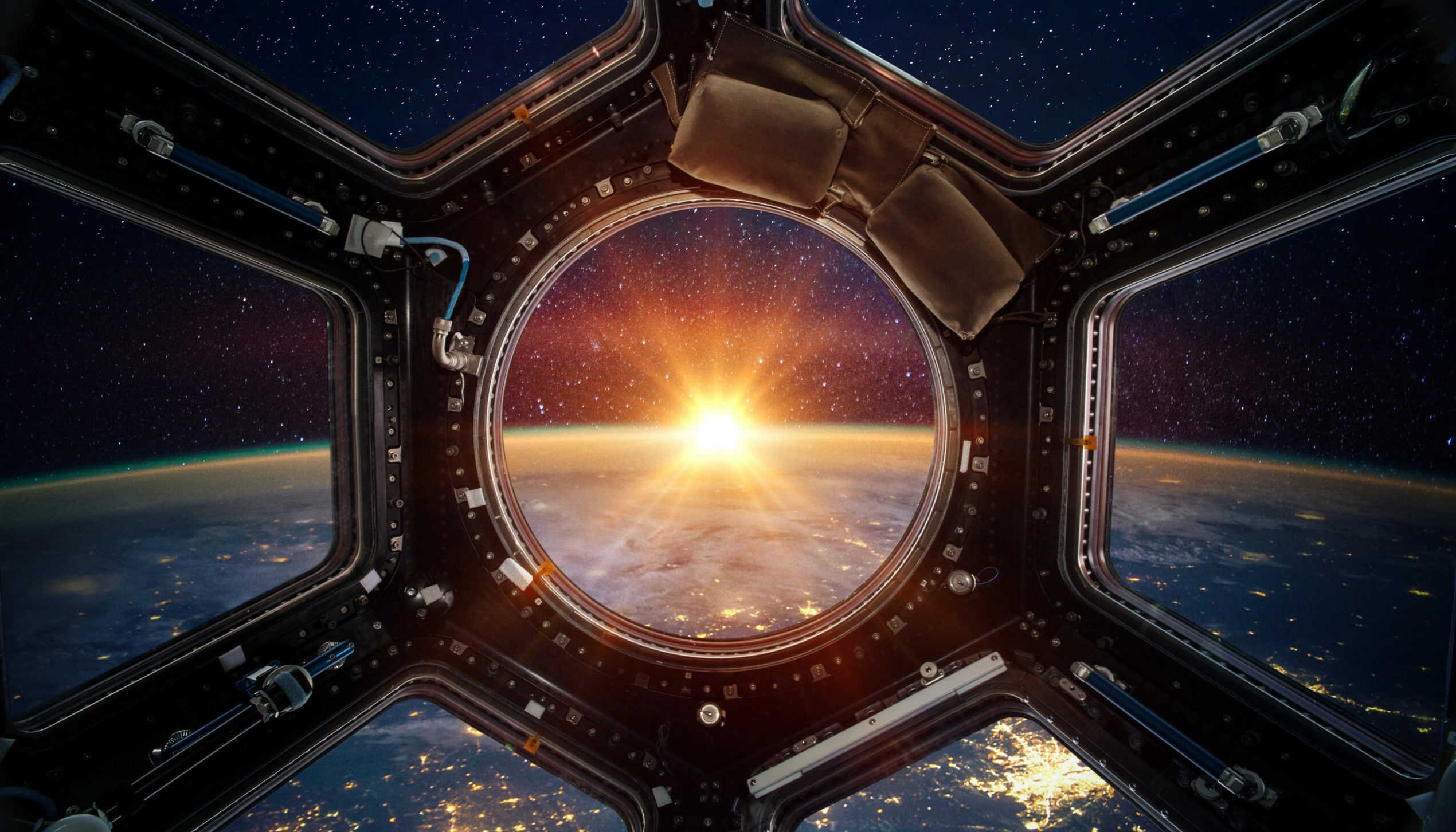
The use of nuclear energy in deep space exploration
space
energy
There are few environments as hostile as space, and surviving humans out there is (and always has been) a challenge. But whether or not the exploration flights are manned, one of the main problems is always finding how to power the ship or space probe. There, the word “vacuum” has never been so aptly named, and to go about space activities – electrifying machines, propelling them or communicating – you either have to find an energy source on site, or take it with you from Earth.
It is these two possibilities that lead to the two energy sources currently used in space: solar energy, which converts part of the sunlight into electricity on site using photovoltaic panels. But also the use of nuclear reactions for energy and, in the future, the drive of machines whose conditions of use do not allow (or are poor) the use of solar energy.
More than 50 years of nuclear power in space and elsewhere
Also on Earth, there are places that are very far from civilization, and under such extreme environments, it is very difficult to provide a stable and reliable source of energy there. Fireway Rock, for example, is a small island less than a square kilometer in size located in the frigid environment of the Bering Strait, off the coast of Alaska, between the United States and Russia. On this small rock, near the Arctic Circle, the US Navy first installed a radioisotope thermoelectric generator (RTG) in 1966 to supply electricity to “environmental monitoring” facilities.
Today, this device is the key to powering many probes for space exploration, the most famous of which are the Pioneer and Voyager probes (which are currently leaving the solar system) or the Cassini-Huygens probe. Who discovered Saturn and its moons between 2004 and 2017.
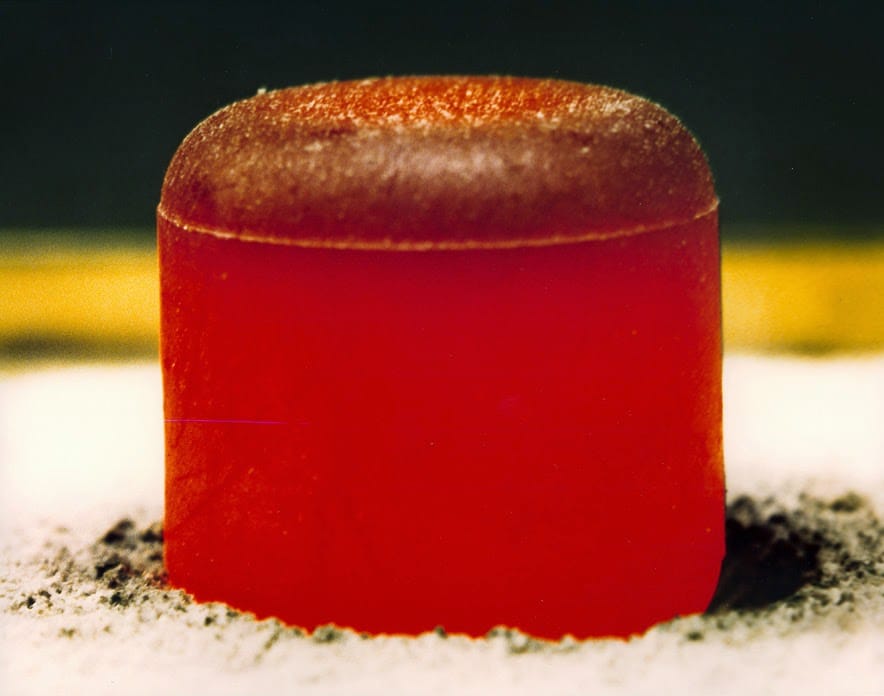
It was released by its radioactivity. Credit: NASA.
Although solar power generators use radioactive materials such as plutonium-238 or americium-241, they are not considered “nuclear reactors” in the sense that they do not cause sustained nuclear fission reactions, as in nuclear power plants. Instead, the natural heating of a mass of radioactive material is used. It is this heat from radioactivity that will be converted into electricity using thermocouples.
Even if the efficiency of this conversion is very low (about 10%), it has the advantage of producing electricity in a stable and continuous manner for decades. Radioactive materials have a “half-life”, which gives the time during which their radioactivity (and thus their energy production) is halved. For plutonium-238 (the most widely used in today’s RTGs), its half-life is ~88 years, ensuring sufficient power supplies for space missions whose duration typically spans over a decade or two.
Space Electricity: Solar or Nuclear?
But how long the system provides electricity is not the only benefit of this technology. In fact, the sun emits light continuously, effectively allowing the mission to go on forever as long as it is illuminated by light. But this is exactly where the shoe pinches. Depending on the mission parameters and the environment of the science equipment, the supply of solar energy is not always guaranteed.
The rovers used to explore the surface of Mars must deal with local weather conditions.
On Mars, for example, the rovers used to explore the surface must deal with local weather conditions. The Red Planet already has an atmosphere that, although much less dense than Earth’s (the pressure there is ~200 times less), does not prevent sometimes very fast winds from raising the fine ocher dust that scatters its surface. It would then be re-deposited on the solar panels of humanoid robots, sometimes blocking available sunlight almost completely.
In December 2022, the InSight mission to study the internal structure of Mars ended after 4 years of activity, during which the solar panels were almost completely covered with dust. This is why the Curiosity and Perseverance rovers, which were sent to Mars in 2012 and 2021, respectively, are equipped with an RTG. In addition to producing electricity, it also makes it possible to heat certain sensitive parts of electronics that are not well adapted to the average Martian temperatures, which are around -60 degrees Celsius.
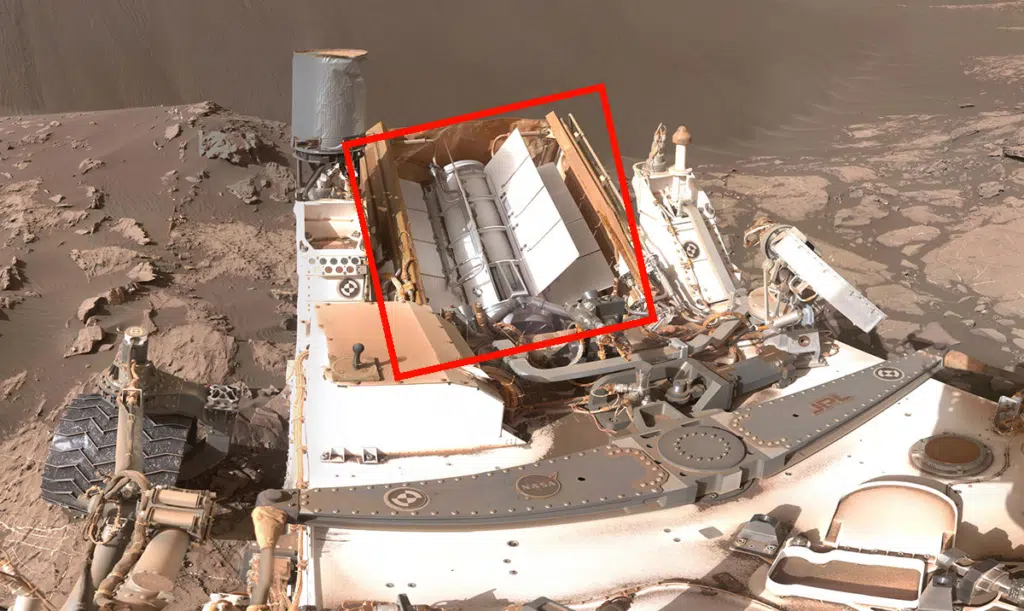
But even in environments with no atmosphere (and thus without dust deposition), RTGs may be necessary.
During the Apollo missions to the moon, RTGs were used to supply power to scientific instruments placed near the lander modules. Reason: Some of this equipment was to be used continuously for more than 10 years. However, on the Moon, the day is much longer than on Earth. A day (between sunrise and sunset) lasts approximately two Earth weeks. As for the lunar night, it lasts a long time. So solar appliances were not able to supply electricity to appliances for two weeks, every month: hence the usefulness of thermoelectric generators.
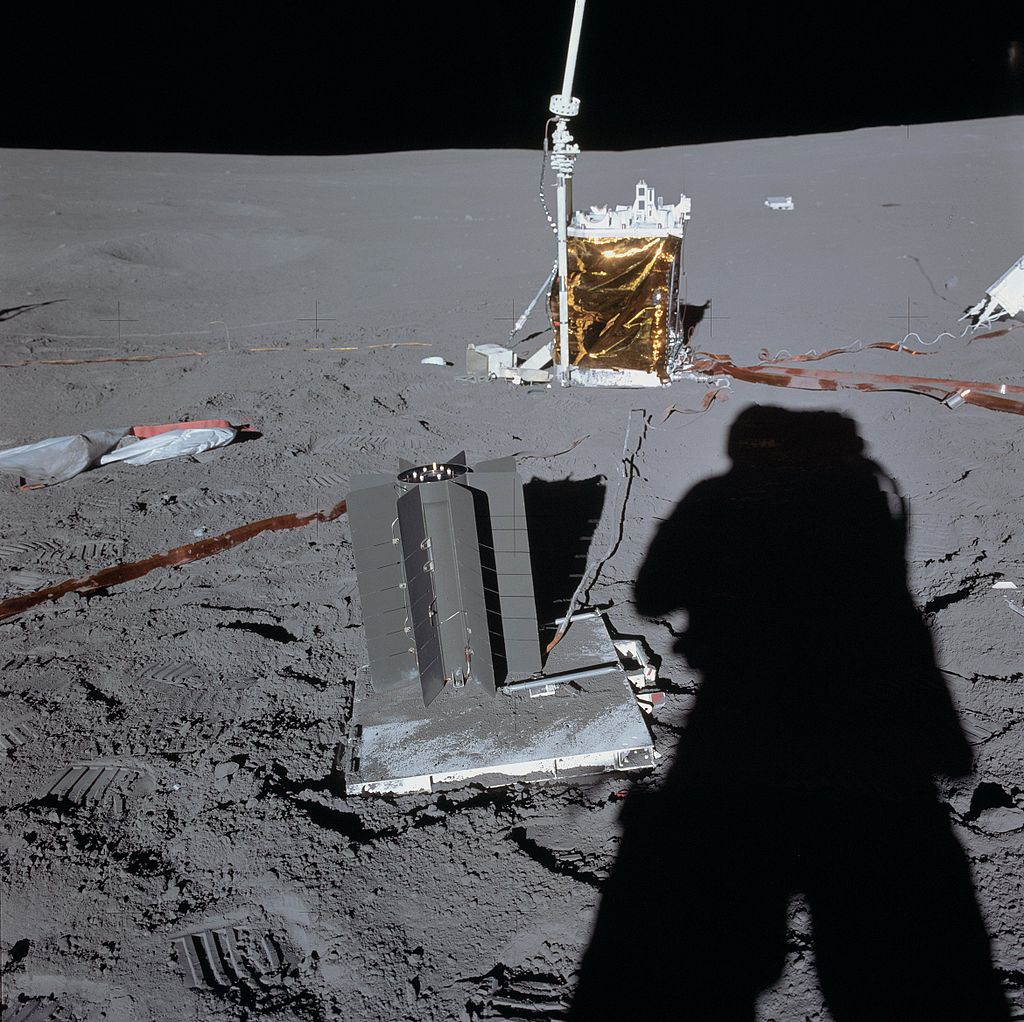
Finally, even in space, where the sun is constantly shining, it is necessary to think carefully about the type of technology that will be used to power the exploration probes. In fact, like any light source, the farther we are from the Sun, the less illumination we get. And this drop in luminosity is very fast. decreases as the square of the distance. If we move away 3 times, we receive 9 times less light. When we move 10 times further away, we get 10² = 100 times less light.
Practically, for all missions traveling beyond Jupiter’s orbit, the amount of light received is so low that solar panel use is no longer effective. Once again, it is the RTG technology that overcomes this problem, for example, for the Cassini-Huygens mission to explore Saturn and its moons or the famous New Horizons mission that allowed for the first time in the history of astronautics to obtain them. Images of Pluto’s surface have been resolved after 10 years of traveling in the solar system.
Nuclear propulsion
Another area of space, in the next decade, should see the arrival of new nuclear-based technologies: space propulsion. In this field, the principle is always the same: Project as much matter as possible as quickly as possible on one side to generate a force that pushes the ship in the opposite direction. This is the famous principle of Action-Reaction. Currently, this principle is roughly divided into two technologies: chemical propulsion and electrical (ionic) propulsion, each of which has advantages and disadvantages.
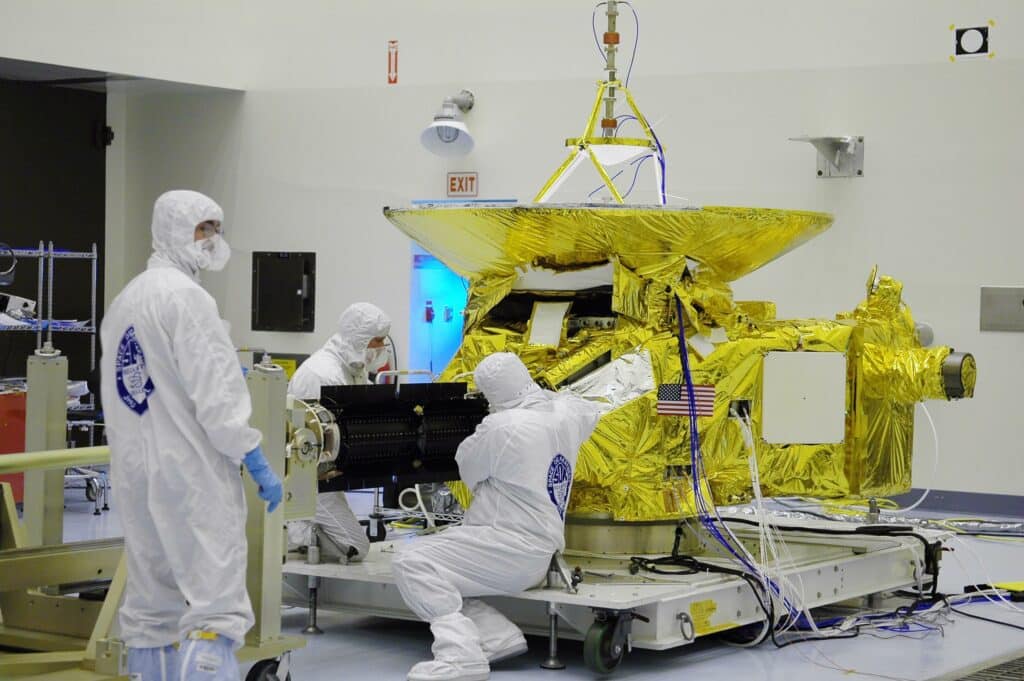
Conventional chemical propulsion uses propellants, the combustion of which produces large quantities of hot gases, which is responsible for a very large thrust, but it is very limited in time (about ten minutes at most). In addition, it would take to carry huge amounts of fuel which would burden the ship, requiring more fuel to be used…to propel that fuel.
Conversely, ion propulsion involves accelerating ionized gas between electrically charged lattices. The exit velocity of particles no longer depends on a particular chemical reaction but on the strength of the electric field that is created.
It is likely that the speed of the particles will be much higher, which makes it possible to significantly reduce the amount of fuel used. The ion engine uses one hundred grams of fuel per day, while the Ariane rocket consumes several hundred tons of fuel per second. This ion propulsion is more efficient and can be used continuously for weeks, or months, at a stretch.
The drawback: It generates very low thrust (a few newtons at most), which puts significant restrictions on the types of devices it can be used on. On the other hand, thermonuclear propulsion consists of using a propellant liquid (hydrogen, for example) and heating it by passing it through the core of a nuclear reactor. It can then be expelled at high speed and in large quantities to propel the ship. In terms of efficiency, nuclear propulsion is somewhere between chemical and ion propulsion, allowing, in theory, a very high gas ejection velocity, while supporting very long propulsion times.
In 2021, NASA selected three groups of companies to conduct concept studies for thermonuclear propulsion reactors (BWX Technologies / Lockheed Martin on the one hand, General Atomics Electromagnetic Systems / X-energy / Aerojet Rocketdyne on the other, and finally Ultra Safe Nuclear Technologies / Blue Origin / GE Hitachi Nuclear Energy/GE Research/Framatom/Matrion). Work is underway.
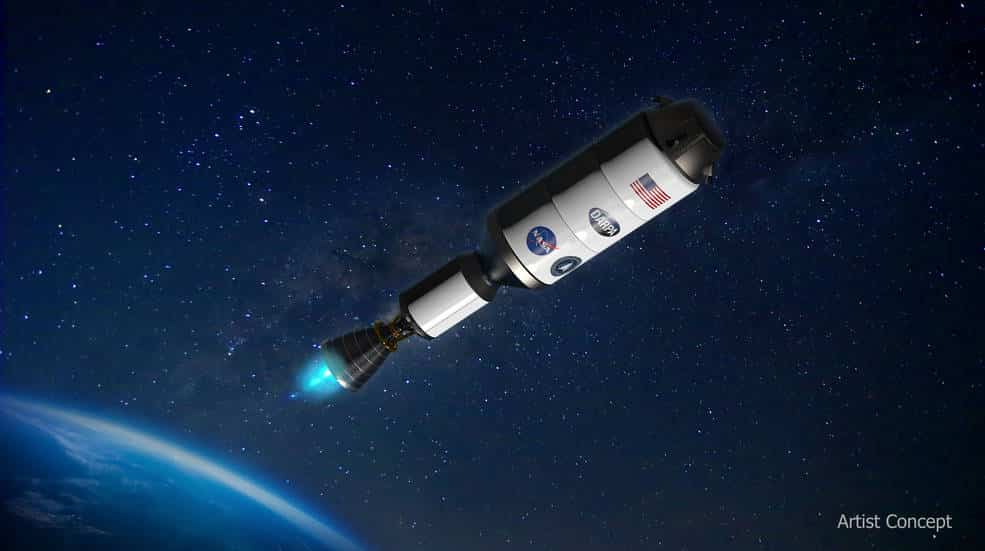
At the end of January 2023, Bill Nelson, the current NASA Administrator, announced a collaboration with DARPA (Defense Advanced Research Projects Agency) “to develop and demonstrate advanced nuclear thermal propulsion technology from 2027.” Europe, for its part, issued a report in 2013 called “Mejahit” that proposed a roadmap for developing nuclear systems in space. However, it has not resulted in any publication since.
One of the main problems in the development of space technologies based on nuclear energy is, of course, the security and societal aspect. Today it is relatively easy to build RTGs whose small radioactive spheres are shielded by successive layers to ensure good heat transfer while withstanding events such as bomber destruction on liftoff or uncontrolled atmospheric re-entry (c. occurred in April 1970 when the Apollo 13 mission returned to Earth in a state of After surviving the heat of re-entry without breaking, the RTG plunged into the Pacific Ocean over the 10-kilometre-deep Tonga Trench.
On the other hand, it is difficult, in the case of the development of future nuclear propulsion engines, to say how this type of larger and more complex machine can guarantee the same level of safety. However, it is a critical step that must be taken if we are to develop this type of new space propulsion technology and reach Mars in much less time than we do today.

“Organizer. Social media geek. General communicator. Bacon scholar. Proud pop culture trailblazer.”
